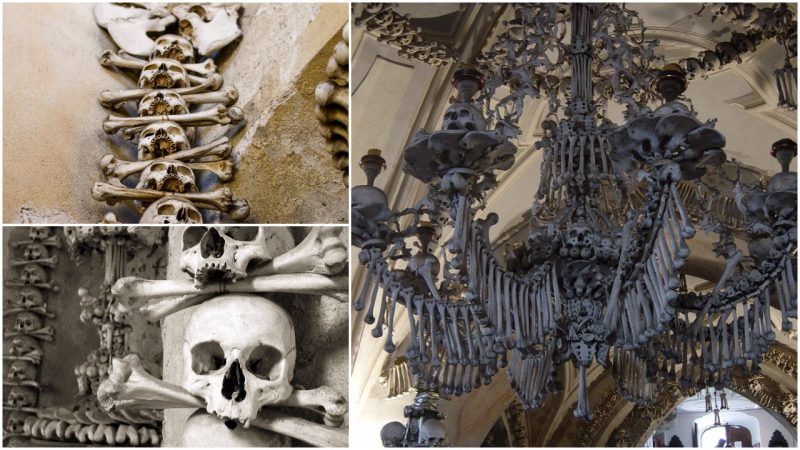The Sedlec Ossuary is a small Roman Catholic chapel, located beneath the Cemetery Church of All Saints in Sedlec, a suburb of Kutná Hora in the Czech Republic.
The ossuary is estimated to contain the skeletons of between 40,000 and 70,000 people, whose bones have, in many cases, been artistically arranged to form decorations and furnishings for the chapel.
The ossuary is among the most visited tourist attractions of the Czech Republic – attracting over 200,000 visitors annually.
Four enormous bell-shaped mounds occupy the corners of the chapel. An enormous chandelier of bones, which contains at least one of every bone in the human body, hangs from the center of the nave with garlands of skulls draping the vault.
Other works include piers and monstrances flanking the altar, a coat of arms of House of Schwarzenberg, and the signature of František Rint, also executed in bone, on the wall near the entrance.
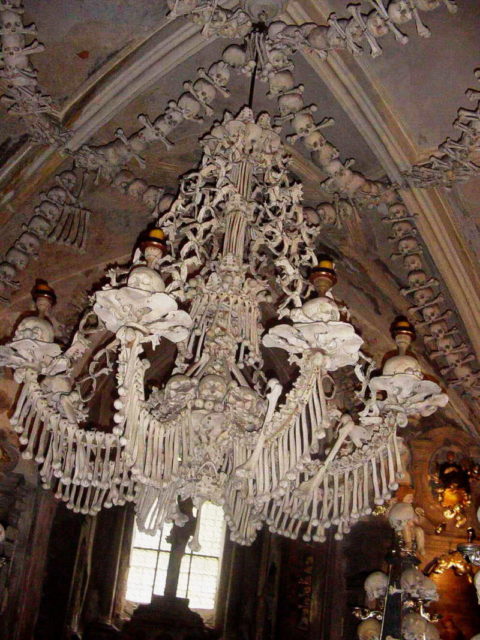
In 1278, Henry, the abbot of the Cistercian monastery in Sedlec, was sent to the Holy Land by King Otakar II of Bohemia.
He returned with him a small amount of earth he had removed from Golgothaand sprinkled it over the abbey cemetery. The word of this pious act soon spread and the cemetery in Sedlec became a desirable burial site throughout Central Europe.
In the mid 14th century, during the Black Death, and after the Hussite Wars in the early 15th century, many thousands were buried in the abbey cemetery, so it had to be greatly enlarged.
Around 1400, a Gothic church was built in the center of the cemetery with a vaulted upper level and a lower chapel to be used as an ossuary for the mass graves unearthed during construction, or simply slated for demolition to make room for new burials.
After 1511, the task of exhuming skeletons and stacking their bones in the chapel was given to a half-blind monk of the order.
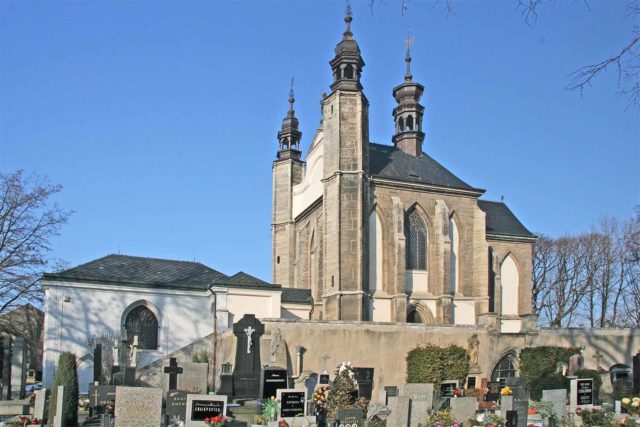
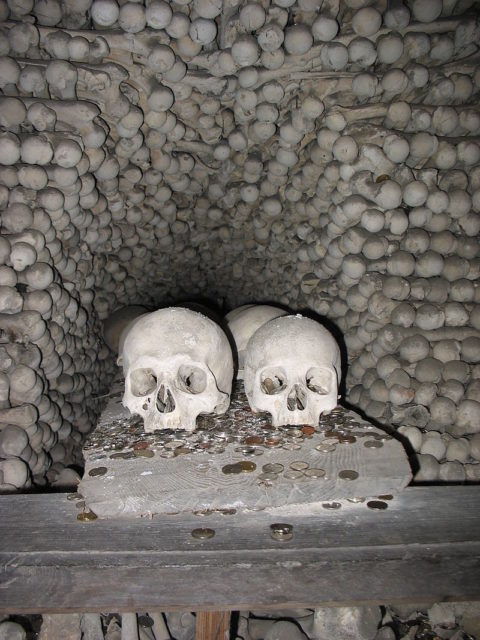
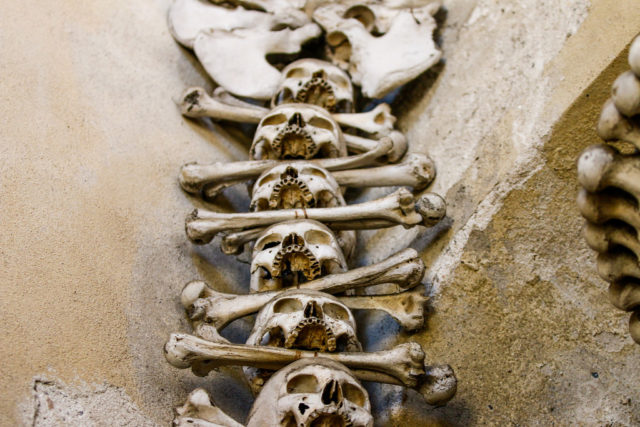
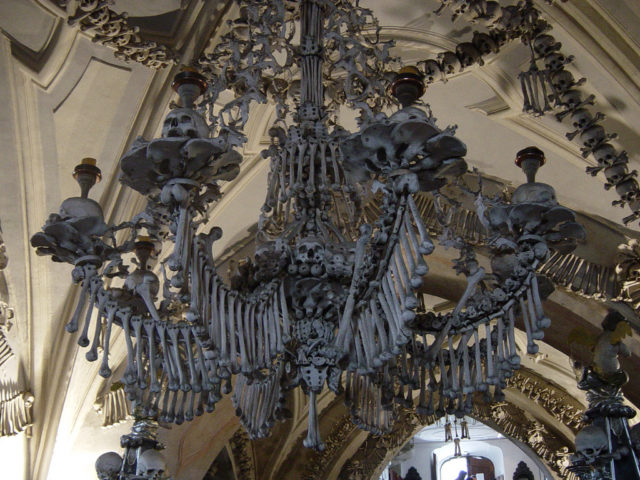
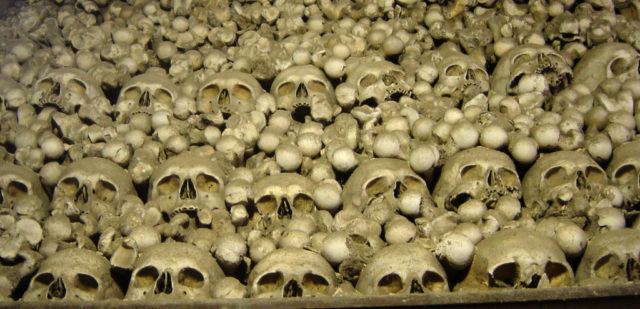
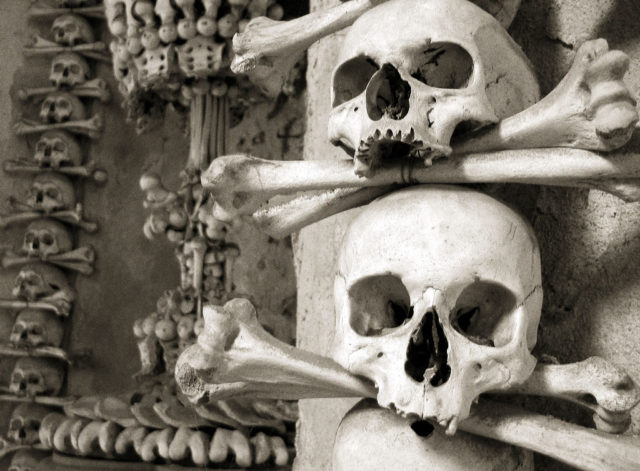
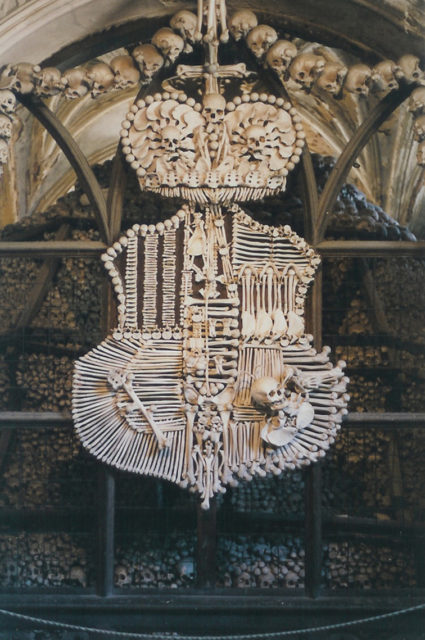
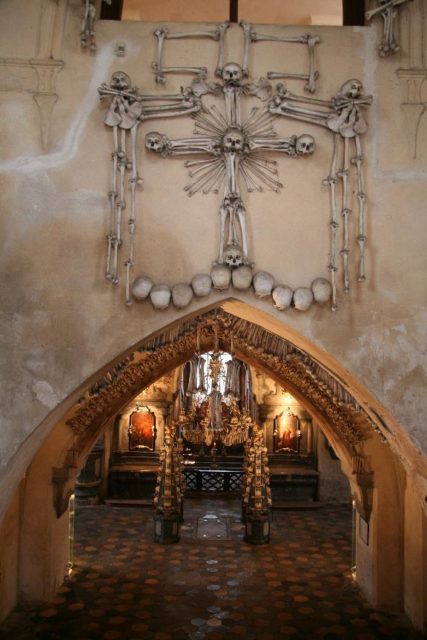
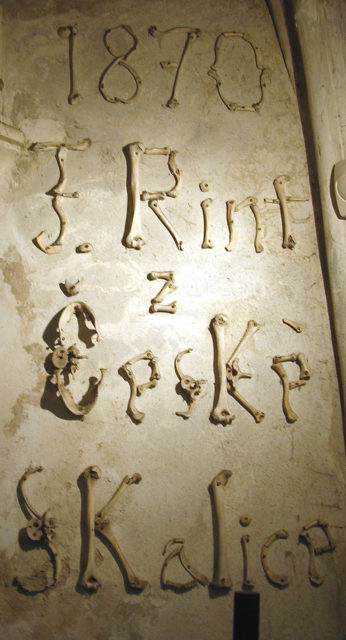
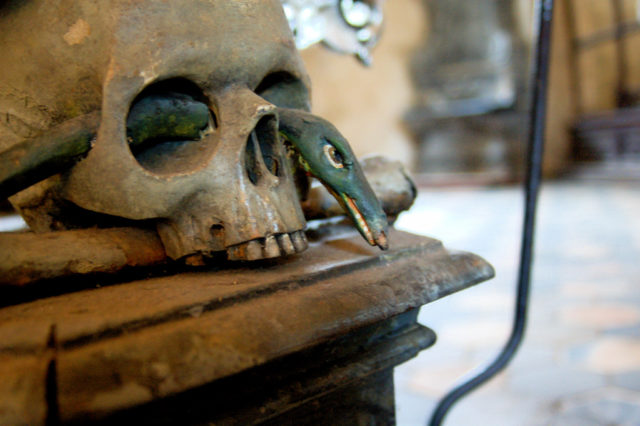
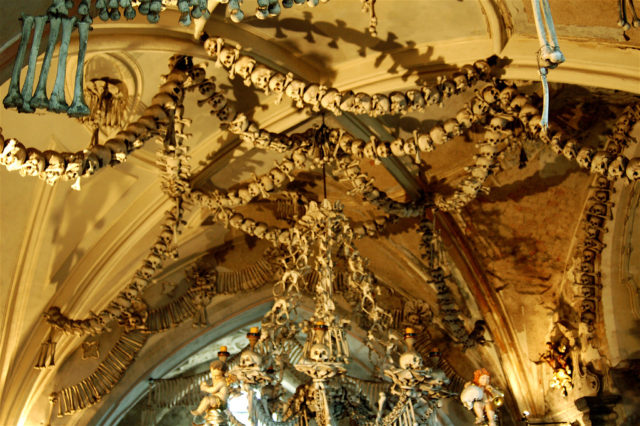
Between 1703 and 1710, a new entrance was constructed to support the front wall, which was leaning outward, and the upper chapel was rebuilt.
This work, in the Czech Baroque style, was designed by Jan Santini Aichel.In 1870, František Rint, a woodcarver, was employed by the Schwarzenberg family to put the bone heaps into order, yielding a macabre result.
